Surrounded by such perfect nature, endless tourists come here to get some respite from the hustle and bustle of urban life. For that reason, the county has developed a variety of facilities to help incoming tourists feel healthier and refreshed during their stay here. There is the Oriental Medicine Museum, a museum that has on display a range of Oriental medicines and related documents, including a copy of the “Donguibogam,” a medical book written by the royal physician Heo Jun (허준, 許浚) (~1530s-1615) during Joseon times (1392-1910). The Sancheong Herb Hall has on display rare medicinal herbs that grow on Jirisan Mountain.
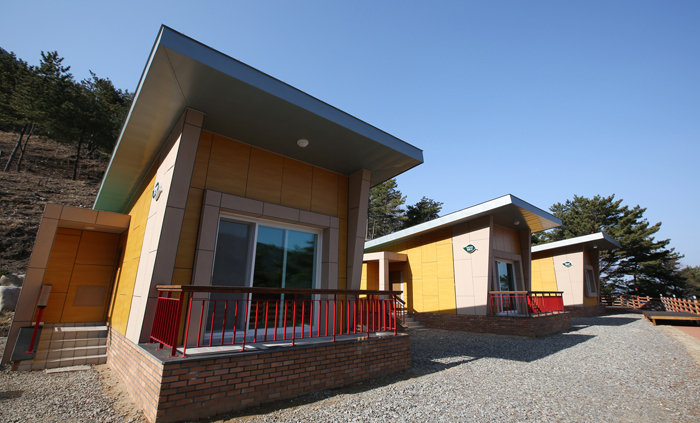
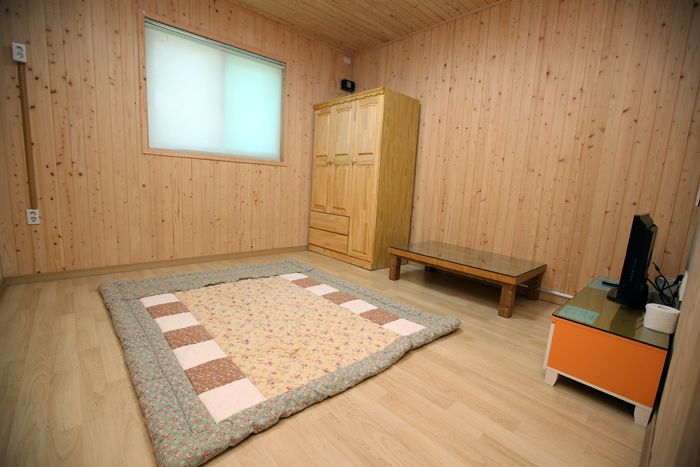
The Sancheong Natural Forest lodge nestled on the slopes of Pilbongsan Mountain in Sancheong, Gyeongsangnam-do, allows tourists to get invigorated both in mind and body while they stay for one or two nights surrounded by forests and clean water.
The district serves up a special experience, allowing people to stay one or two nights at the Sancheong Natural Forest lodge that offers a breath of fresh air and allows visitors to take delight in indulging in the dense surrounding forest. The facilities, four buildings, offer 11 rooms in each building, either as two-storied rooms or two separate rooms, decorated with cypress wood, providing a cozy, comfortable rest area.
Outside, there are special decks where lodgers can set up their own tent and enjoy some camping. For the campers, there are communal kitchens, showers and also a small swimming pool.
* How to get to the Sancheong Natural Forest lodge: 186, 555 beon-gil, Donguibogam-ro, Geumseo-myeon, Sancheong-gun, Gyeongsangnam-do.
Official website: https://huyang.sancheong.go.kr/
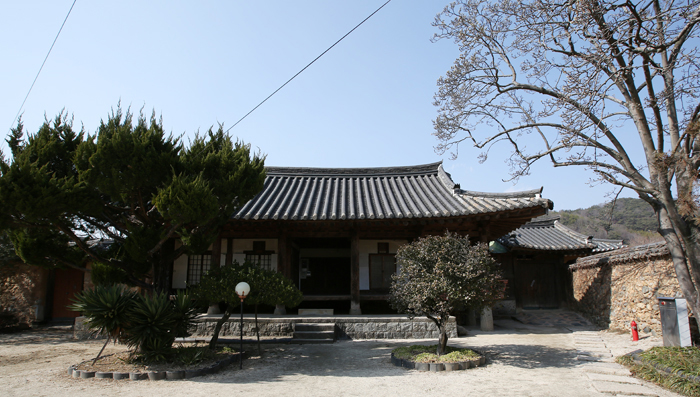
Namsa Yedamchon Hanok Village has old houses dating back hundreds of years. The village offers accommodations and also a variety of events, such as studying at a village school, known as a seodang, and holding a traditional wedding ceremony in some of the old residences.
Namsa Yedamchon Hanok Village forms another favorite tourist attraction. Located in Danseong-myeon, in the southern part of the county, the village brings together a set of old homes. The word yedam in its name comes from the artistic walls, walls that stretch 3.2 kilometers around the neighborhood. Along the walls are standing an array of traditional Hanok residences, creating a charming, lazy atmosphere only found in such historical villages.
The town is also well-known for having been home to numerous virtuous scholars, seonbi, who were born and studied here for the national state examination, the gwageo, in order to become civil servants. A group of historical Hanok are scattered across the village. Among them, the oldest one, the House of the Lee Clan, dates back more than three hundred years, to the 1700s. Welcoming visitors at its entrance are two giant Sophora japonica trees, both more than three hundred years old. They cross each other on the pathway to the entrance.
People say that if a couple walks hand-in-hand through the arched trees, they will live together in a happy union until death do them part. Passing the main gate, one can find the main building that retains its beauty of more than three hundred years.
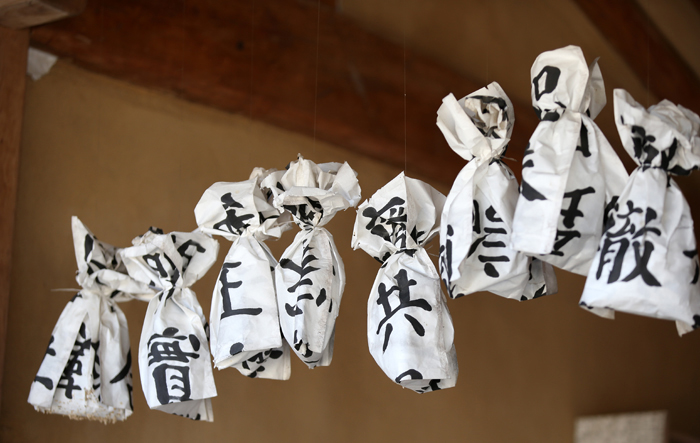
Bags of medicinal herbs hang in one of the old homes of Namsa Yedamchon Hanok Village. In the past, many people placed medicinal herbs around the house this way to prevent disease.
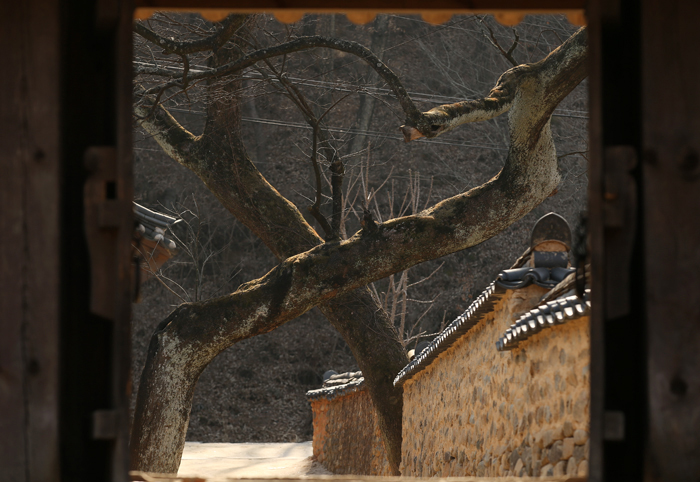
The House of the Lee Clan, one of old homes in Namsa Yedamchon Hanok Village, has two large Sophora japonica trees more than three hundred years old welcoming visitors at the entrance. Crossing each other between two walls, the trees form a rough heart shape. Myth has it that any couple walking hand-in-hand through the heart-shaped trees will live happily ever after.
There is also a 500-year-old persimmon tree standing at the House of the Jeong Clan, and a 650-year-old apricot tree rising in the front yard of the House of the Ha Clan. Discovering these historical trees while strolling through the area adds another delight to the many sights that can be enjoyed in this village.
In addition, visitors have a chance to experience some traditions that used to be conducted at the old houses. For example, they can relive a traditional wedding and make rice cake, tteok, in a traditional manner by grinding the grain in a waterwheel.
Tourists can even take etiquette lessons and learn about the "Thousand Character Classic," or, "Cheonjamun." They can also color clothes with natural dyes using fruits from the Sophora japonica trees.
Some of the old residences offer accommodations, too, allowing visitors to stay overnight, feeling the classical grace and serenity to the fullest.
* How to get to Namsa Yedamchon Hanok Village: Namsa Village, 256 Namsa-ri, Danseong-myeon, Sancheong-gun, Gyeongsangnam-do.
Official website: http://yedam.go2vil.org/
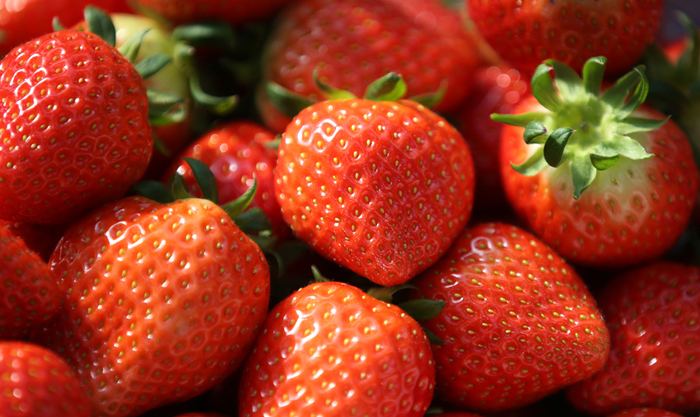
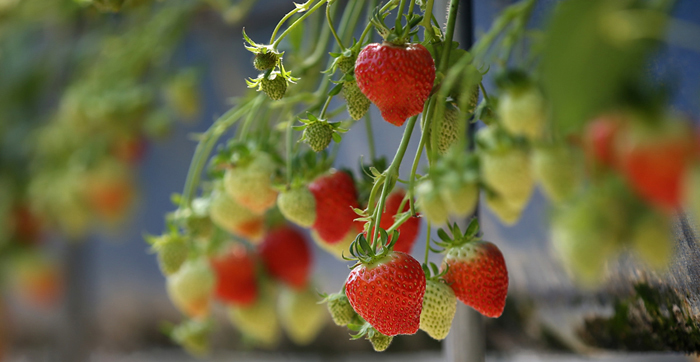
Strawberries grown in Sancheong boast rich color and a juicy flavor, as well as a sweet taste.
Sancheong is also known to be the home of green agriculture. Strawberries come across many people’s minds when they talk about the best strawberries of the nation. Sancheong strawberries are known to be healthier and have a fresher taste than any other berry.
A greenhouse in Cheolhyeon-ri, Sinan-myeon, is busy with pickers gathering strawberries. The fruit grown here is characterized by more sweetness and richer colors, thanks to the region's wide range of daily temperatures.
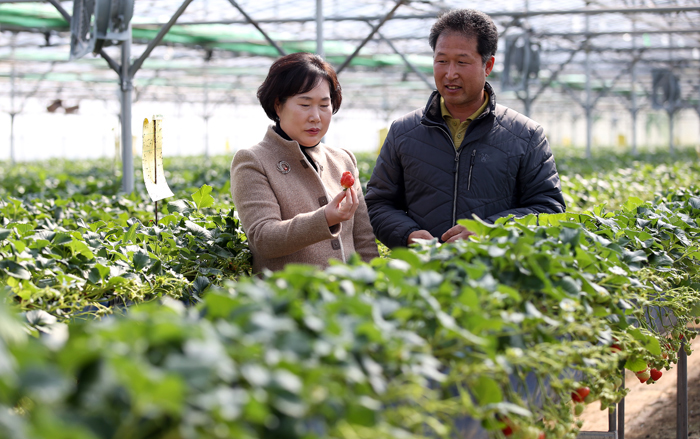
Director Lee Mi-rim (left) of the Sancheong-gun agricultural technology center explains how to produce the region’s strawberries and their excellent taste and color, in a farmhouse in Cheolhyeon-ri, Sinan-myeon, in Sancheong-gun.
“Sancheong has the earliest strawberry harvest every year,” said Director Lee Mi-rim of the Sancheong-gun agricultural technology center. “Sancheong strawberries are produced with clean water and under ideal weather conditions. They're recognized nationwide as being the best. We currently export our fruit to Southeast Asia, including Singapore and Malaysia, too.”
“Our fruit is grown using environmentally friendly methods, known as ‘high bed technology,’ free of any chemical inputs. That’s why they have a juicy flavor and great sweetness,” she added.
Unlike methods of cultivation that use soil, the “high-bed” technology supplies a nutrient liquid through raised beds supported off the ground.
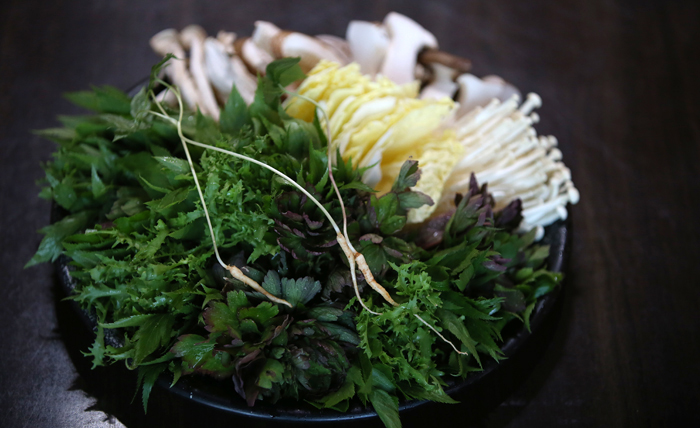
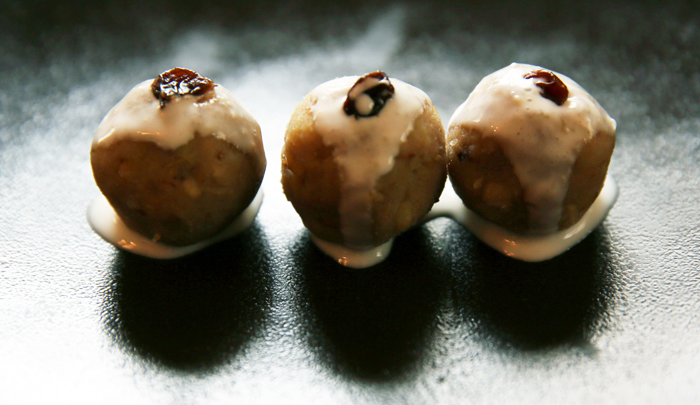
A dish of fresh vegetables (top) and some sweet potatoes with dried persimmons and medicinal herbs (bottom) provide diners with a delicious conclusion to their Sancheong trip.
By Sohn JiAe
Photos: Jeon Han
Korea.net Staff Writers
jiae5853@korea.kr